Many of our destinations on this trip have been a study in extremes. I loved the contrast of visiting a giant piece of ice in the form of Glacier Perito Moreno and then later in the trip visiting one of the largest flows of freshwater in the world at Iguazú Falls. Our visit to Ushuaia took us to the literal end of the road for the Pan American Highway, and the trip out to Cafayate near Salta took us to one of the highest and sunniest wine-growing regions in the world. Our drive through the Argentine Andes treated us to one of the only monkey puzzle forests on the planet as well. And, while we remember it as an endless and painful day of travel on busses, our experience on the Train to the Clouds took us to one of the highest railway bridges ever built at over 4,220 metres (13,850 ft) above sea level. Following the theme of extremes, why not visit one of the driest places on the planet, absolutely devoid of an living plants or animals, at a crazy altitude. One might even think we took our visit off planet and went walking on the moon.
Well, actually, welcome to the Valle de la Luna!
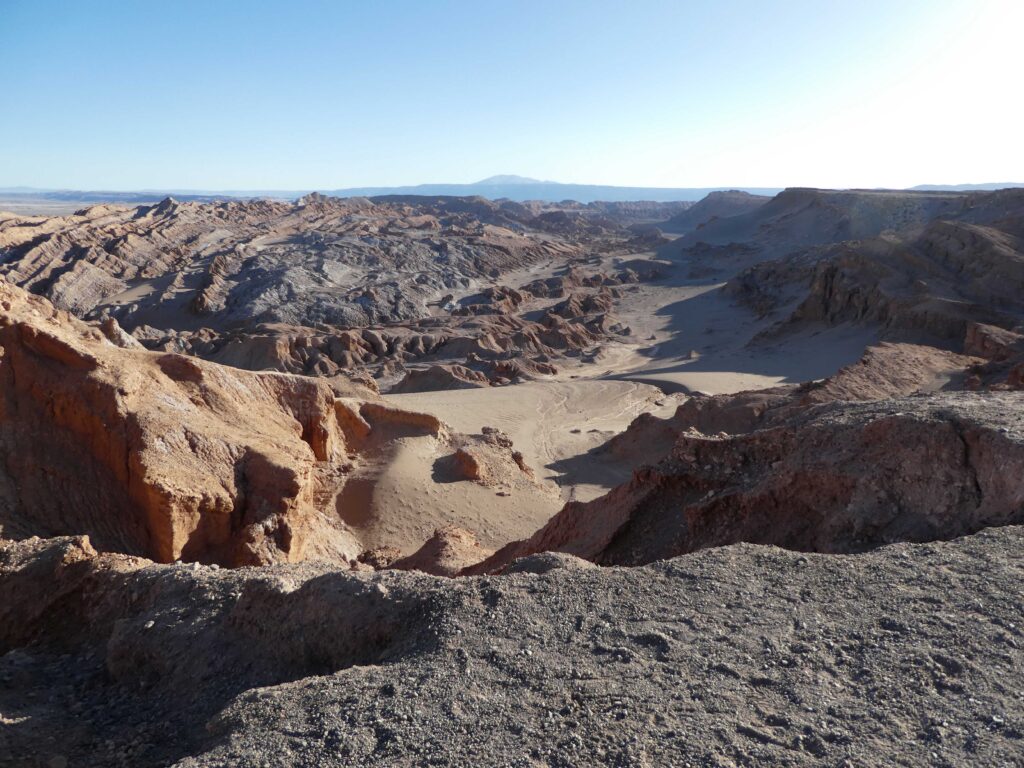
San Pedro de Atacama is everyone’s base of operations for visiting the wonders of the Atacama desert. Driving the highway from the uninteresting mining town of Calama where the airport is located to San Pedro introduces you to this beautiful desolation via an amazing overlook of the Valle de Luna just outside of town. This was our first glimpse of what we’d encounter during our off-planet adventure. The next day, on 25-May-2022 to add a timestamp, we put on our moon boots and ventured out to where the rain doesn’t fall and life takes no purchase–again, not hyperbole, except for in the rare oasis, nothing can actually grow there.
The Dunes
As with every other tourist destination we have visited, Valle de la Luna is very popular with tours and tour busses. The pictures we’re going to share make it look like the place was deserted. Be assured this is just very, very patient photography and cropping. For every pair like us with our own car visiting the park, there were at least 2 tour busses of a dozen or more. As our luck had it, we seem to actually have started at the same time that two school tour groups of at least 3 busses each were also entering the park. We barely squeezed in ahead of them and paid our entrance fee to avoid ending up stuck behind at least 40 teenagers trying to get into the park. I’ll expend some luck for the good timing on that one.
The first stop at Valle de la Luna is the dunes. These are huge sand dunes that dominate the first section of the park but don’t necessarily continue throughout. That was one of the amazing things about this destination. The barren desolation takes many, many different forms, and the landscape varied throughout the tour. The first trail took us along and then up the dunes to get a view.
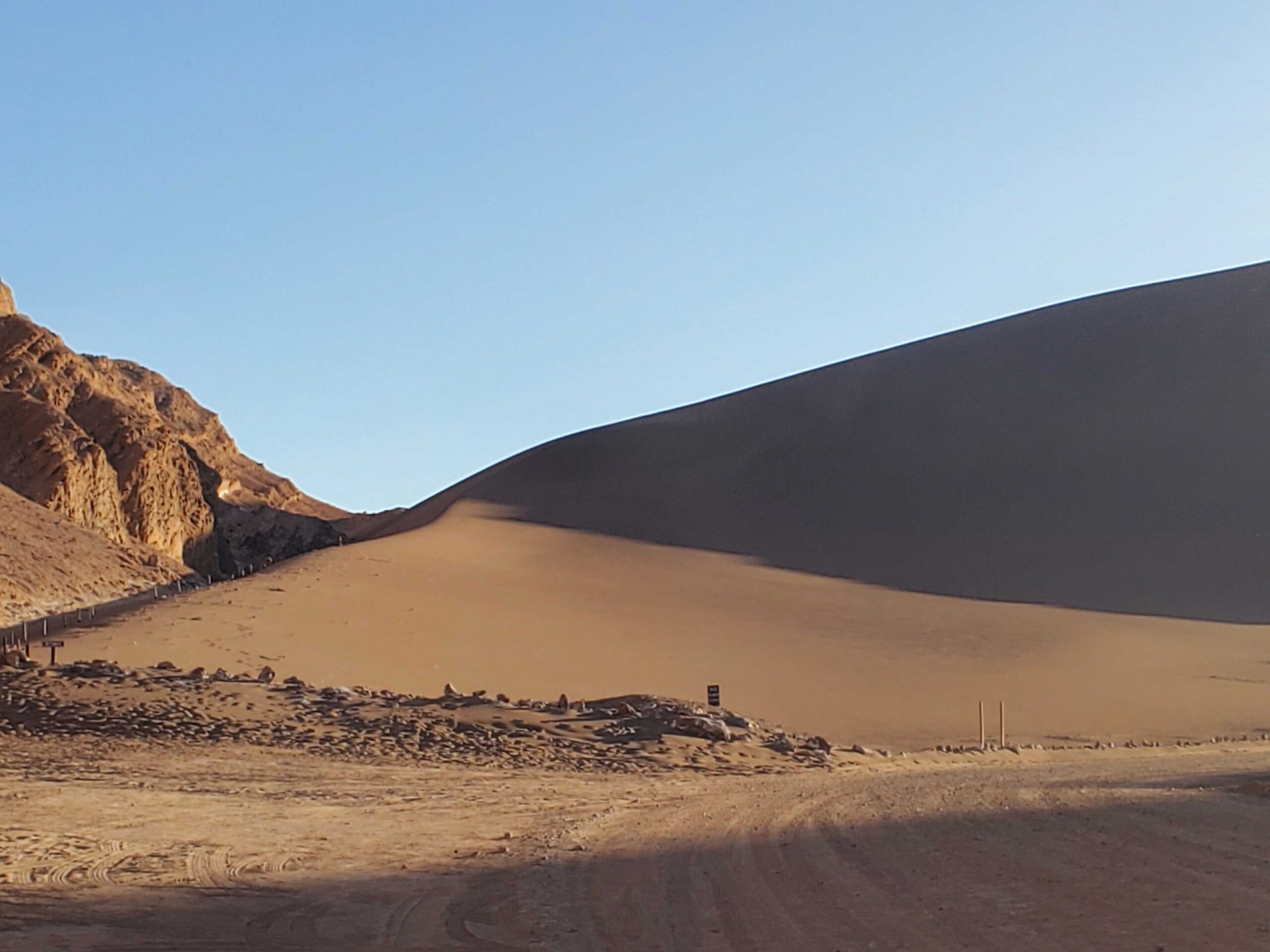
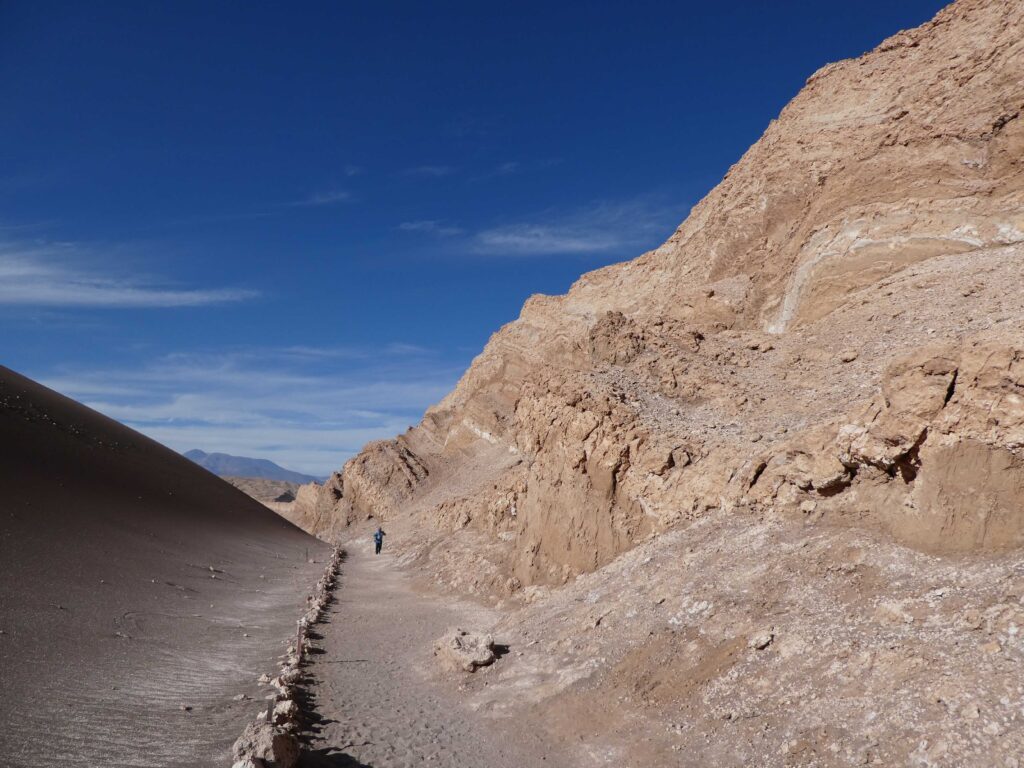
Walking up the trail, the huge dune was on the left-hand side with the rocky hills on the other side. The row of rocks actually marks the trail and trail boundary. The Chileans were excellent at using natural materials to mark paths and not let the artificial interfere with the experience. This is one of the few pictures with a person in it to show the scale. The path continues up and along the dunes.

You might notice a dusty white hue to some of the rocks bordering the sand dunes. It is actually salt. Having been an ancient sea bed, there is a lot of salt mineral content in the rocks and soil. Where the smallest bits of water present themselves in this arid climate, the salt seeks it and oozes out. This creates some fun patterns on the rock face that almost look like petroglyphs. No actual petroglyphs as no people past or present actually tried to live in this inhospitable environment.
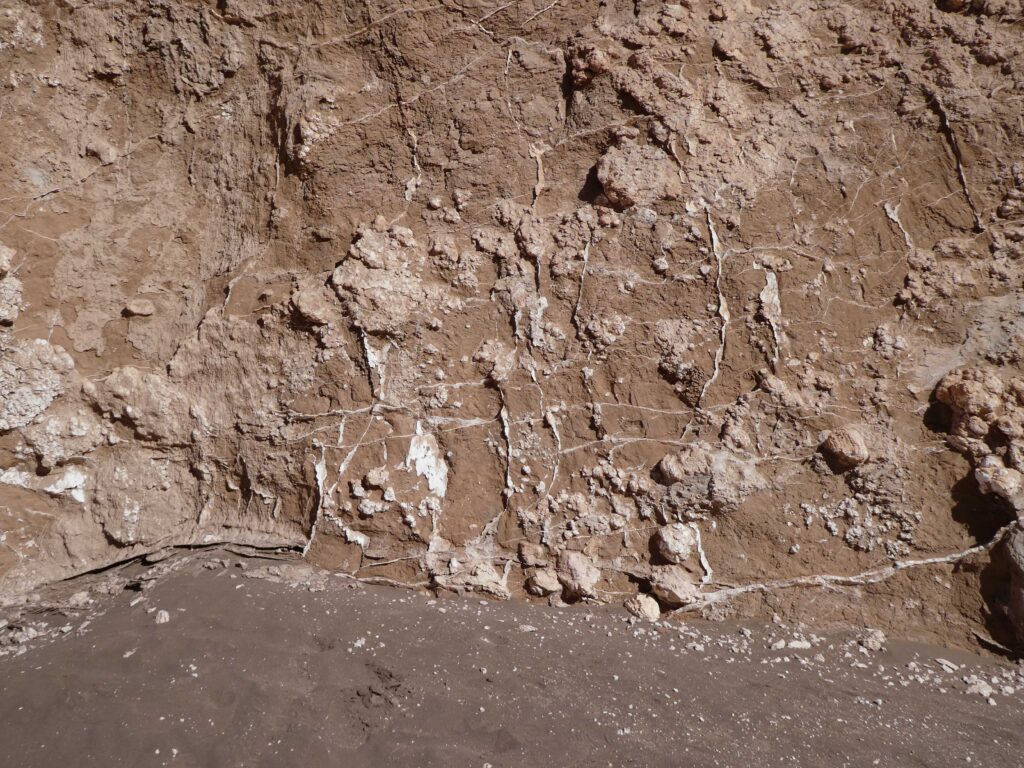
The top of the dune rewards your long and hot trudge through the loose sand with some pretty amazing vistas. This is where the moon analog really comes into view. It is a series of vast rocky plains. The only tip off that you are actually bound terrestrially is the lack of the occasional crater.


The Salt Mountain Ranges
Moving on from the dunes further into the park, you’re surrounded by rocky landscape bordered by large peaks. Not much else to say about these views but “wow!” Here are a few of our favorites.
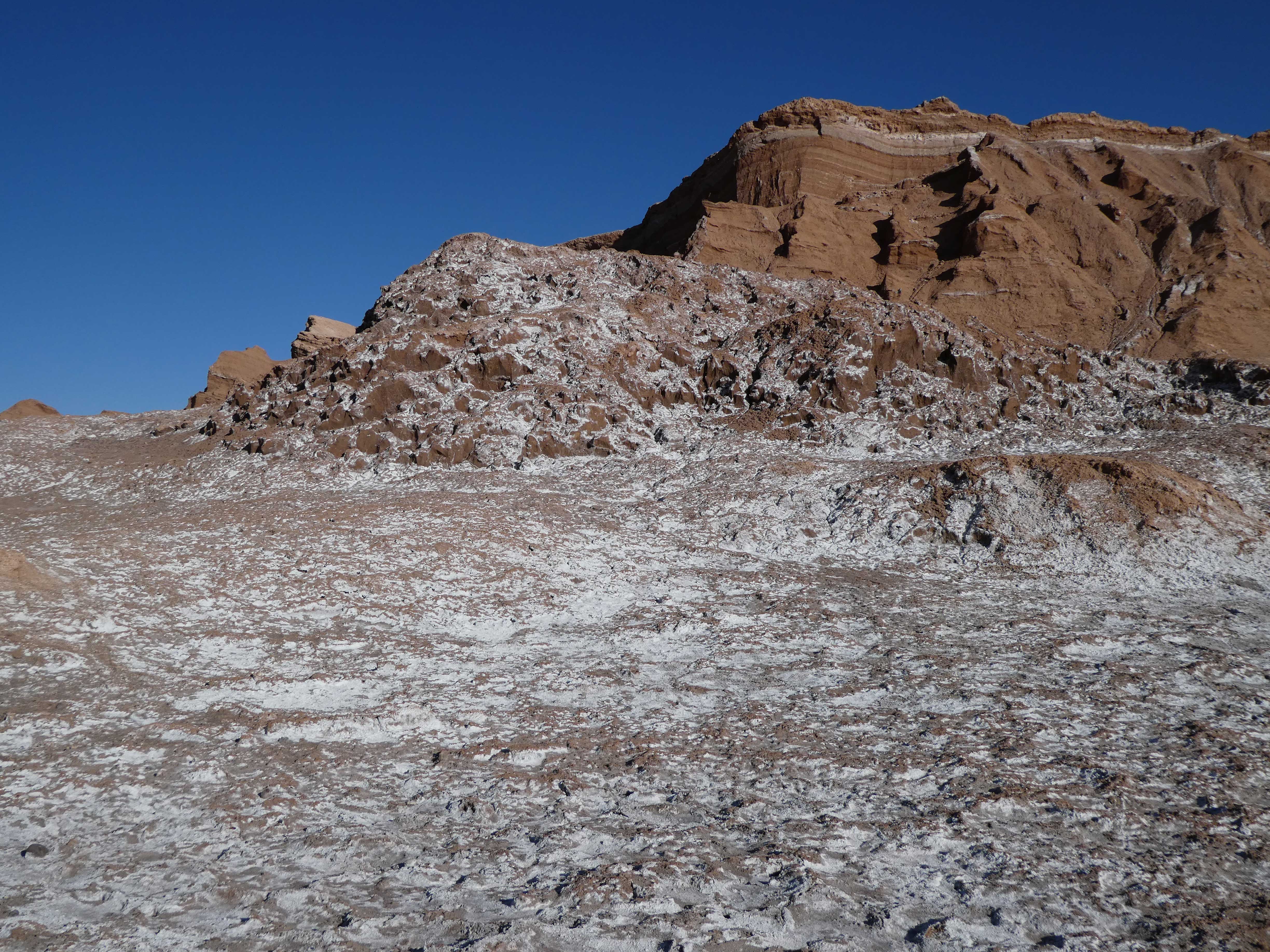
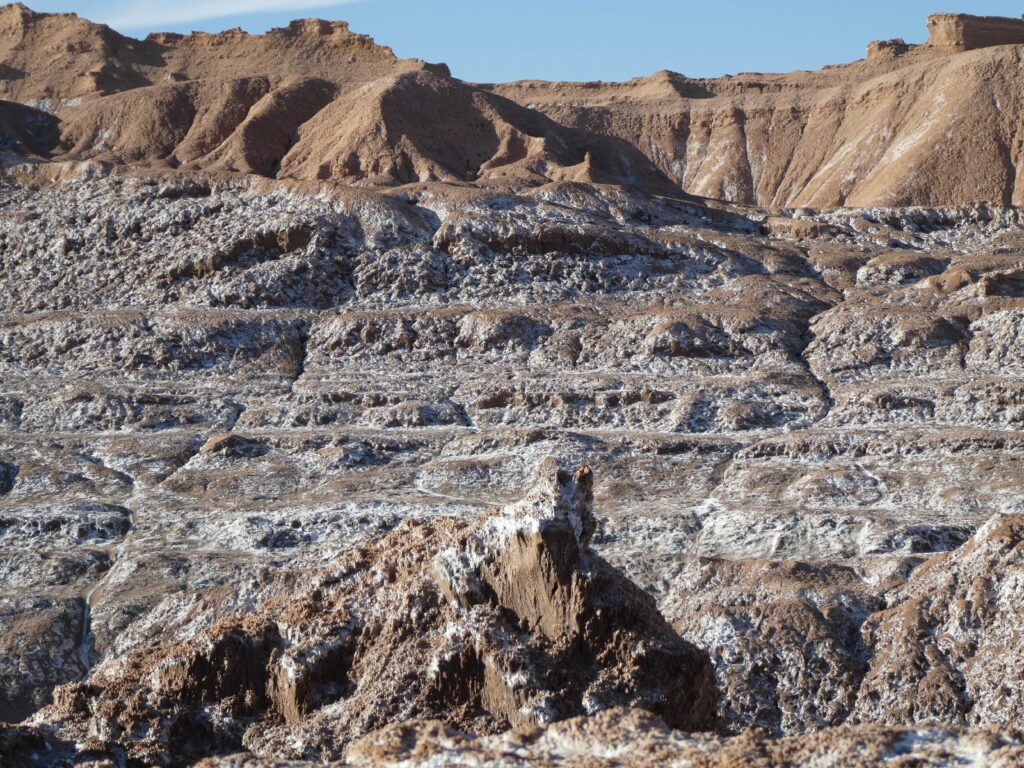
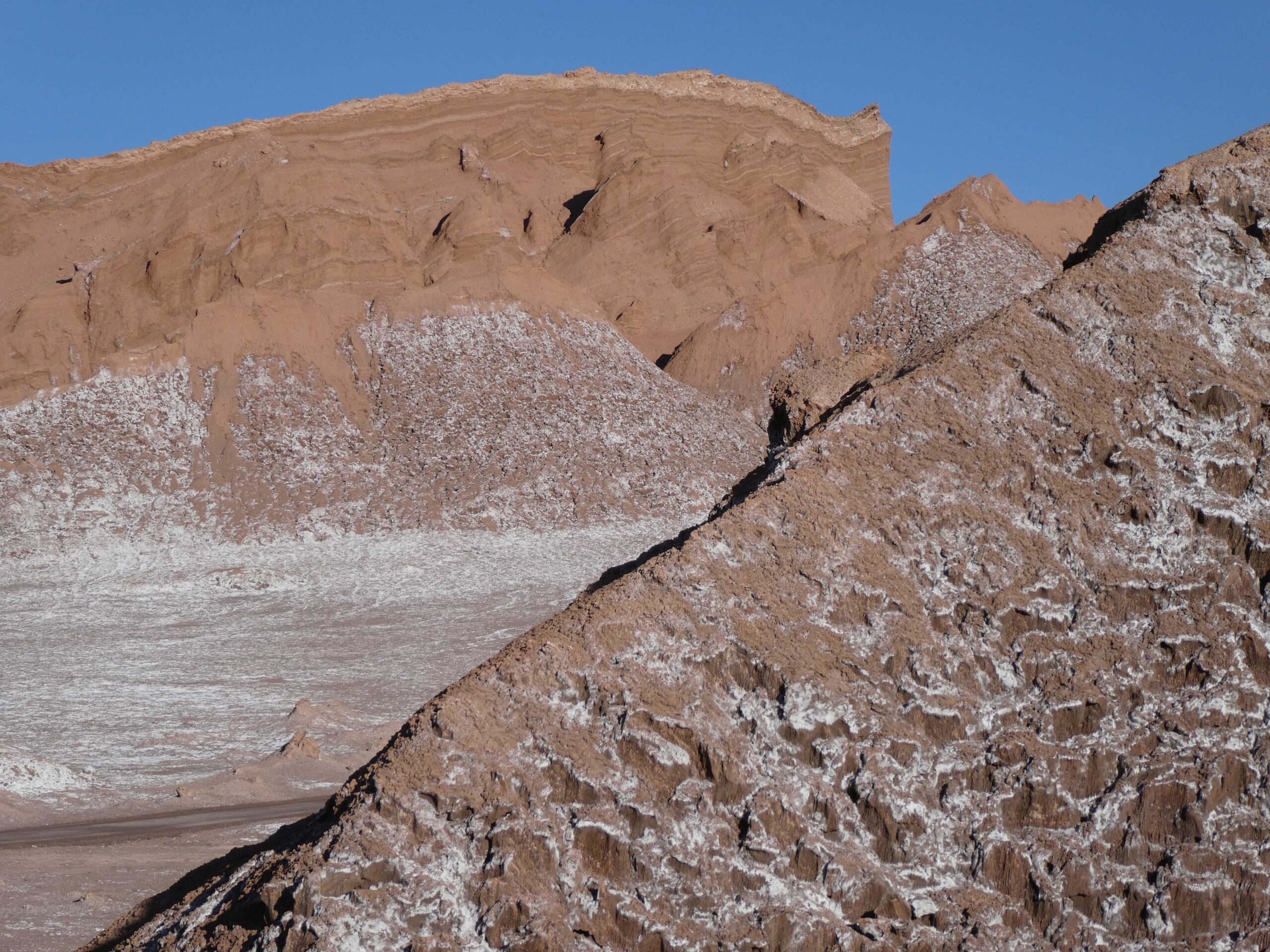
The Volcanoes
The Atacama landscape is littered with volcanoes that poke their noses up in many of the landscapes around the area. The Lascar volcano was uniquely visible from the Valle de la Luna, with its perfect cone putting an exclamation point on the backdrop of the desolate moonscape below.

Los Tres Marias
The end of the road at the park leads out to an open area covered with rocky spires dotting the landscape. Sitting among them, one can almost imagine being at the bottom of the ocean and visualize the sea life that must have once been there. Los Tres Marias and the other outcrops look somewhat like purposeful statues in an otherwise flat landscape.
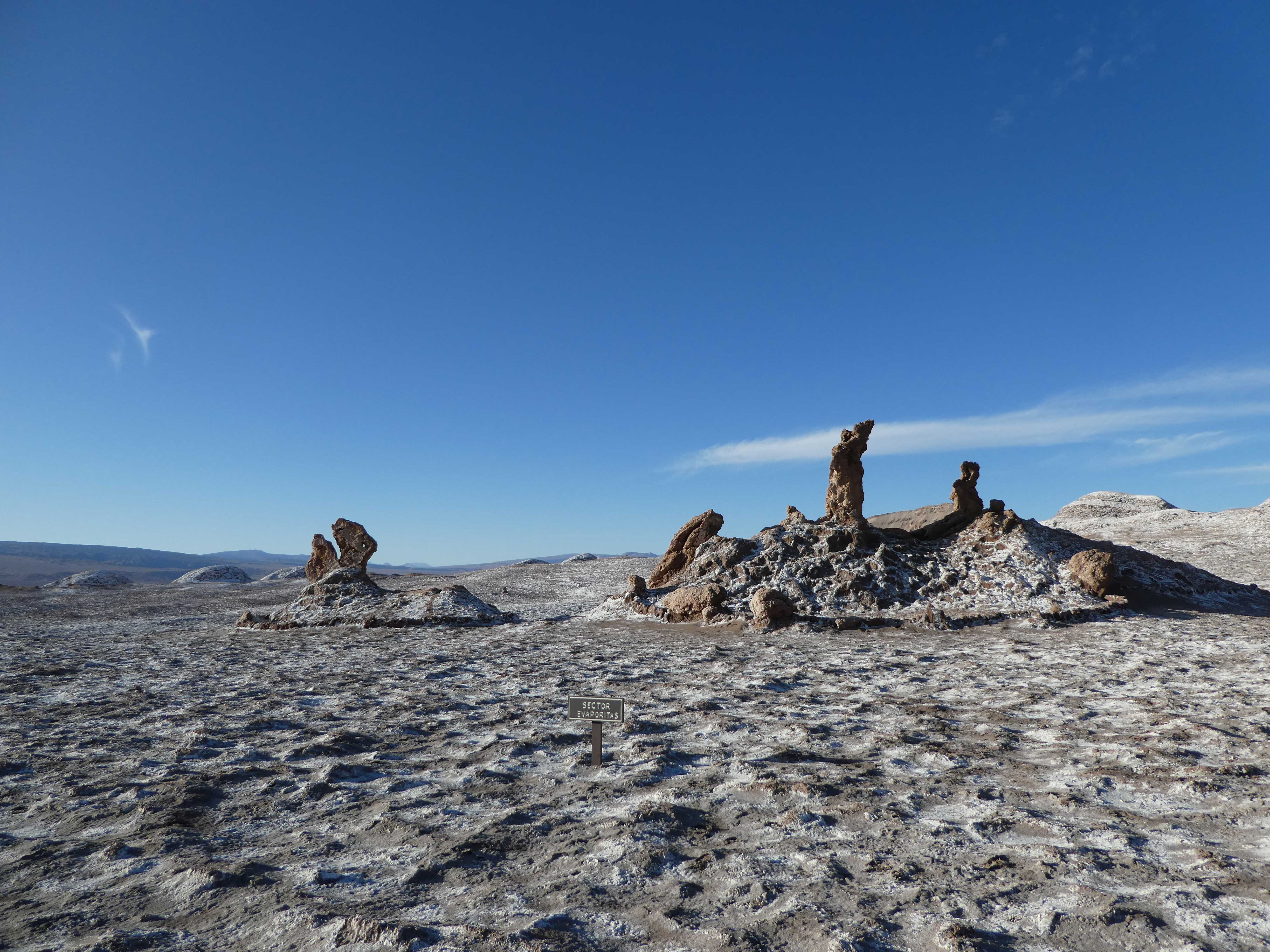
My favorite formation is the one to the left of the Tres Marias in the photo above. If you get a little closer, you see the hole in the rock that looks like an eye, transforming the split in the rock into a giant mouth crying as a beast struggles to free itself from the salt flats. (Bit of drama to spice up the pictures of rocks.)
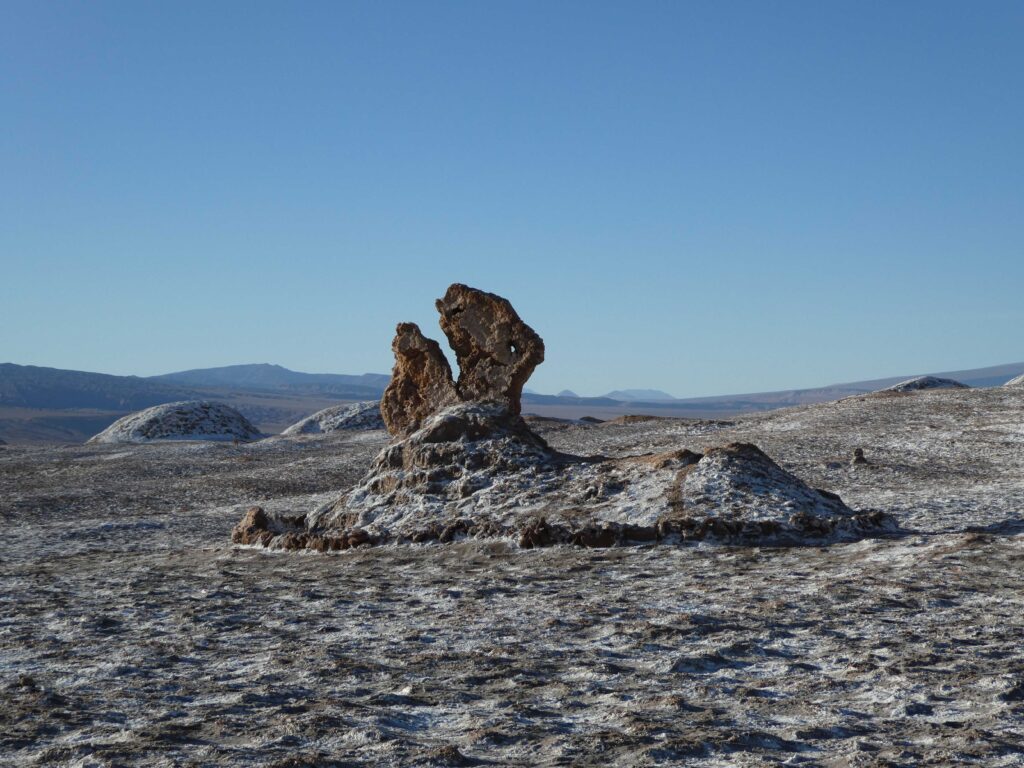
Here are some of the other features we photographed while visiting the area.
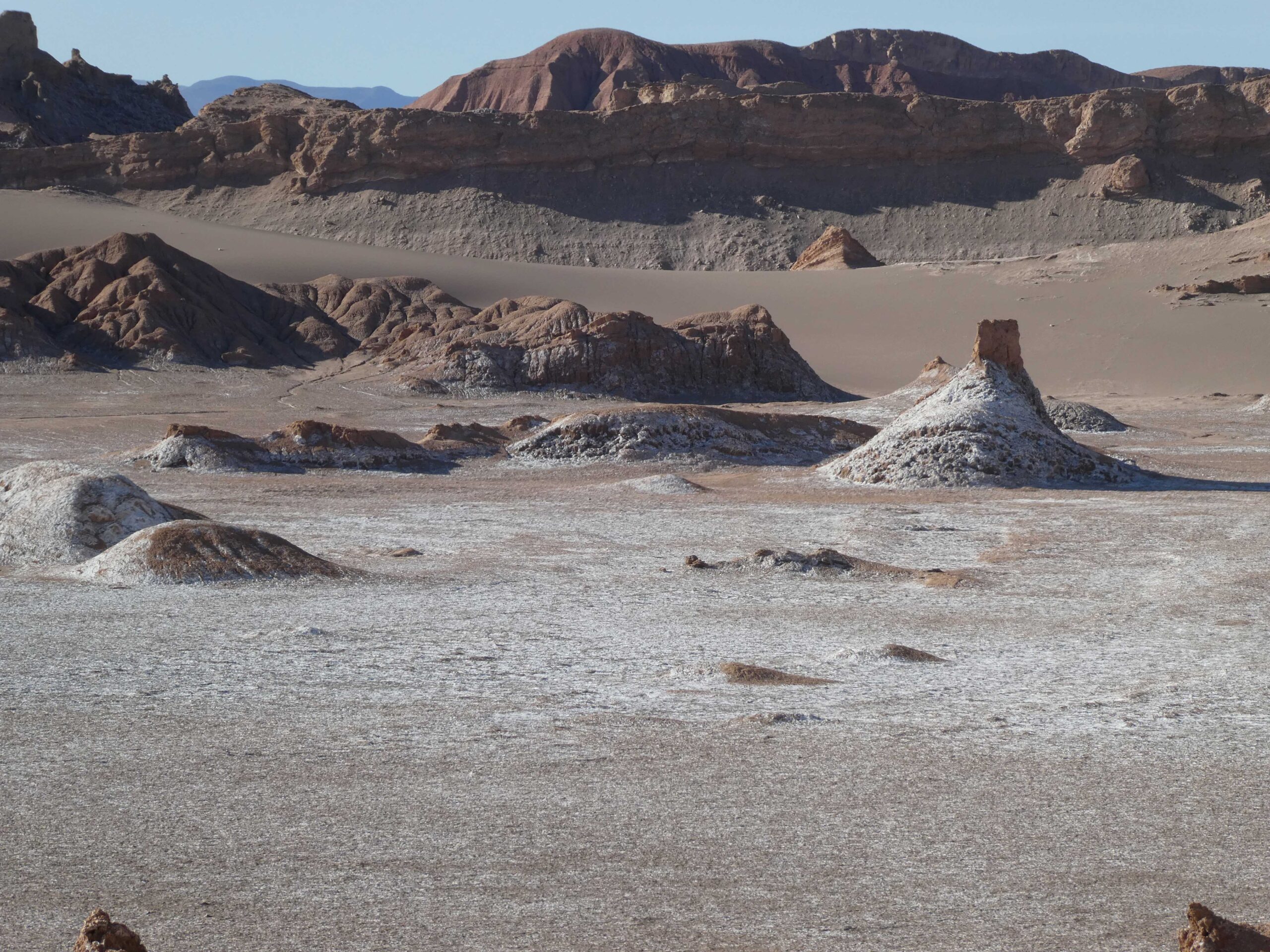
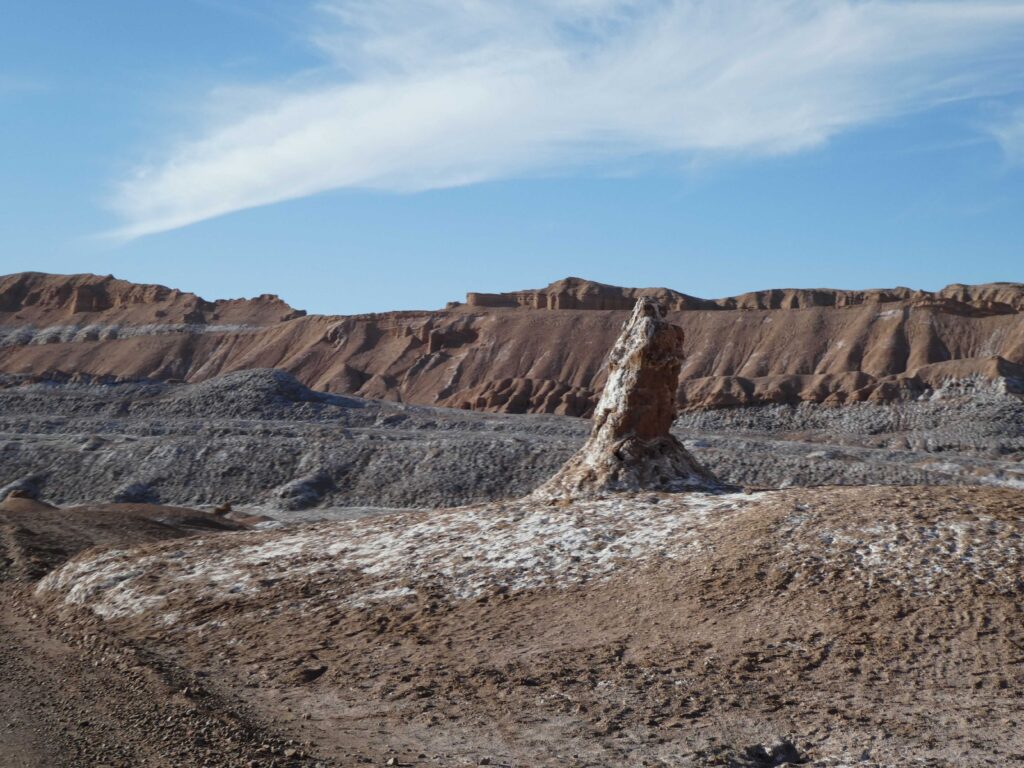
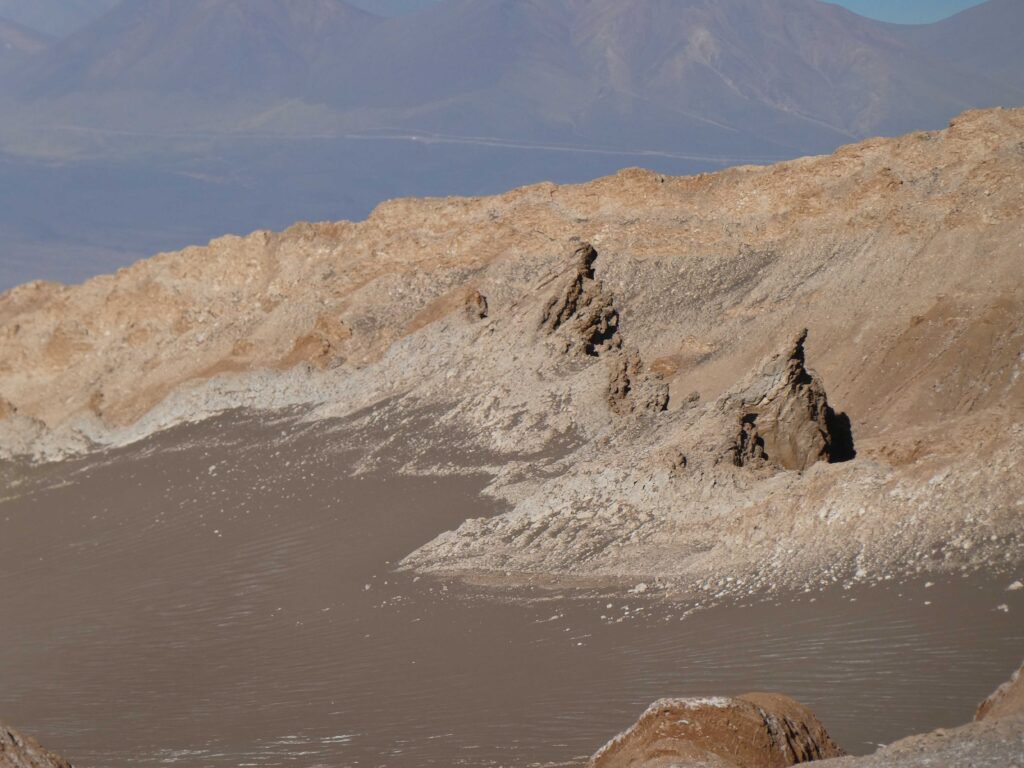
I love this last picture as it appears to be where the sandy shoreline gives way to the rocky cliffs, further enhancing the impression of an ancient seabed and the currents at work on the landscape.
The Sunset
Turns out that the reason there was such a large group of people at the park entrance at the same time is to time the visit with the sunset. There is actually another section of the park outside the main area we were visiting that gives you an overlook of the valley, apparently best enjoyed at sunset. The path of tour busses led out of the park, back toward San Pedro, and then up the highway where we started our trip into the area. Unknown to us just a day earlier, there was a turn-off just before where we stopped to take pictures that leads to another entrance and the park overlook. We followed the road and masses of people to the sunset viewpoint. Given the absolute lack of water in the area and atmosphere, the sunset effect is primarily shadows extending across the landscape as the sun descends behind the mountains. No colorful clouds or deep pinks in the sky, just darkness crawling across the valley.

This is one of my favorites as I just can’t help seeing a giant face smiling across the valley as the sun disappears.
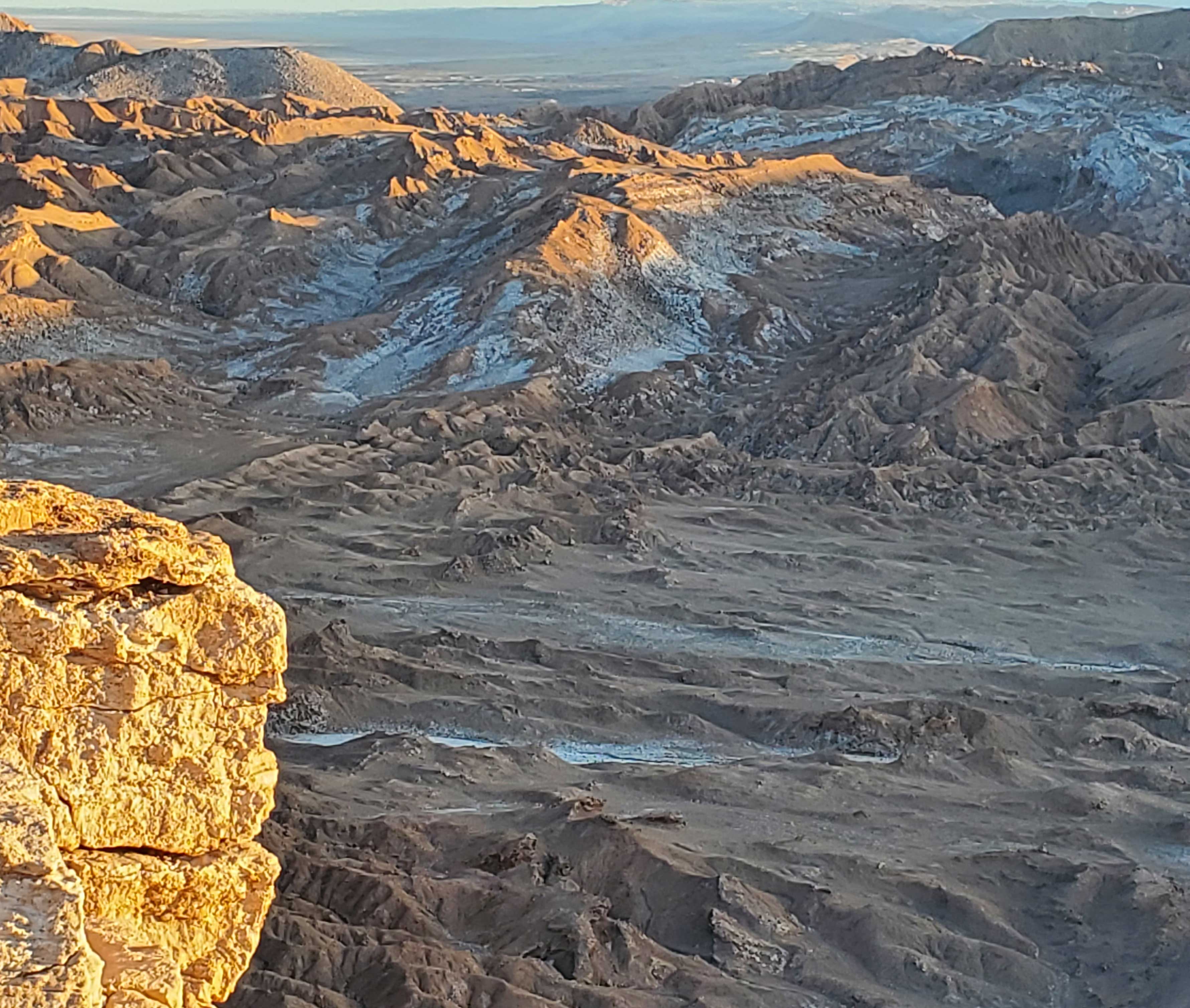
What better way to end a wonderful day than with a smile and a lovely sunset. Until next time. . . .

All of your pictures are amazing. I am enjoying your trip. Thanks for letting us enjoy the trip with you.
Your words are very good! The pictures are good too!